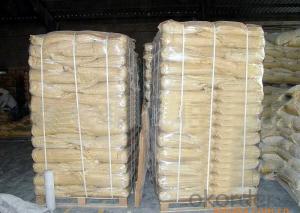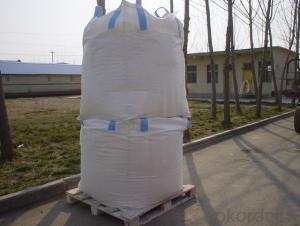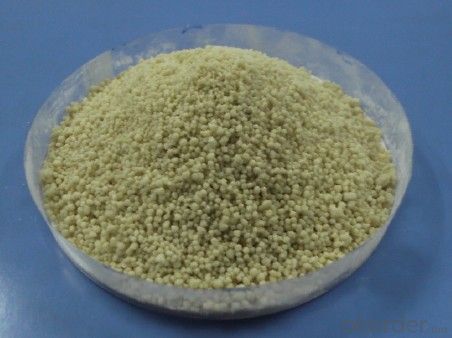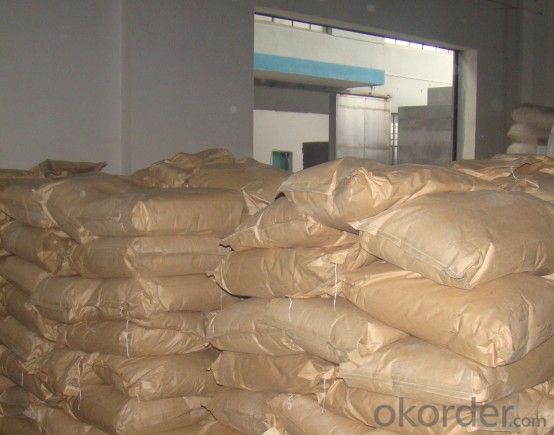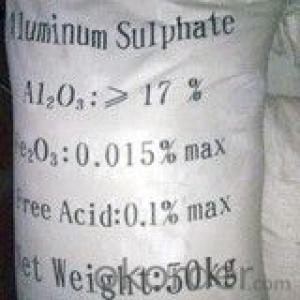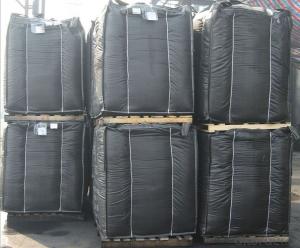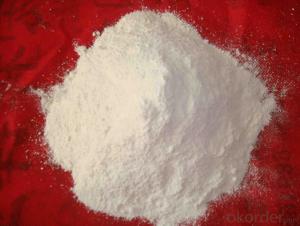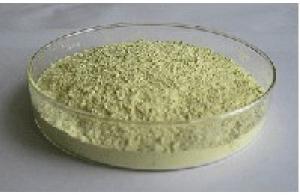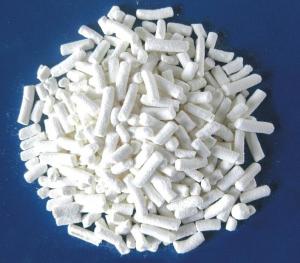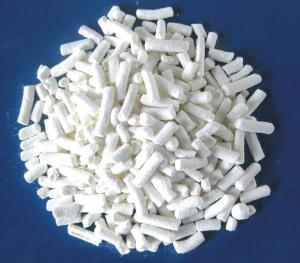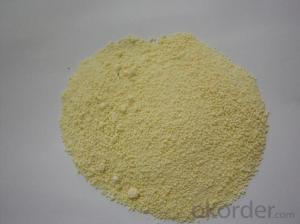RUBBER VULCANIZING ACCELERATOR·DPG (D) MODEL
- Loading Port:
- Tianjin
- Payment Terms:
- TT OR LC
- Min Order Qty:
- 25 m.t.
- Supply Capability:
- 12000 m.t./month
OKorder Service Pledge
OKorder Financial Service
You Might Also Like
RUBBER VULCANIZING ACCELERATOR-DPG(D)
Chemical Name: Diphenyl guanidine
Molecular Formula: C13H13N3
Molecular Weight:211.27
CAS NO。: 102-06-7
Executive standard:Q/CNPC55-2001
Specification
| Index | |
First-class products | Acceptable end-product | |
Appearance(Visual inspection) | white powder | Greyish-white powder |
Initial M.P, oC ≥ | 145.0 | 144.0 |
Loss on drying, % ≤ | 0.20 | 0.30 |
Ash, % ≤ | 0.30 | 0.40 |
Residues on 150μm sieve,% | 0.10 | 0.10 |
Residues on 63μm,% ≤ | 0.50 | 0.50 |
Properties: Grayish-white or white powder notaste, nontoxic . Density is 1.13--1.19. Soluble in acetone, ethyl acetate, benzene, alcohol, slightly soluble in carbon tetrachloride Insoluble in water and gasoline.
Application: mainly used for natural rubber syntheic the medium-speed accelerator. Used in thiazoles, Autumn Lamb, and the second category of iodine acid catalyst for the active agent, and agent for DM, TMTD used, can be used for continuous vulcanization. Mainly used in the manufacture of tires, plastic sheet, soles and industrial products, rigid and thick plastic products.
Packaging: Polypropylene knitted bags lined with polyethylene bags.Net weight 25kg per bag.
Storage: Keep container tightly closed in a cool, well-ventilated place. The recommended maximum storage life is 2 years when stored under normal conditions.
Note: The product could be oiled and pelleted apon customer request.
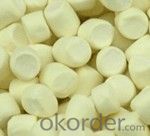
- Q: On the issue of chemical balance and catalyst
- The catalyst also changes the forward and reverse reaction rate.
- Q: What is positive and negative catalyst in chemistry?
- Negative catalysts are, on the other hand, slowing down the positive reaction rate at the same time
- Q: describe a biological catalyst?
- Enzyme are biological catalyst, proteinous in nature, formed in animal's body by exocrine cell, present in inactive form, generally ends with suffix ase e.g enterikinase with exceptions pepsin, specific in nature not only speed up biological reactions but also lower down the reactions inside the body.
- Q: Does the catalyst slow down the chemical reaction rate? Still can only accelerate
- The role of the catalyst is to change the activation energy to achieve the purpose of changing the reaction rate, there is a rate of response to speed up the rate of slow response
- Q: What is the definition and function of the catalyst in chemistry?
- The catalyst plays an important role in chemical production. For example: in the oil refining process, the use of high-performance catalyst into gasoline and no other; in the car exhaust treatment process, with the catalyst to promote harmful gas conversion ...
- Q: about 1-3 sentences on this will do thank you
- A catalyst is a compound that participates in and increases the rate of a chemical reaction without being chemically altered itself. These reactions can be anything from inorganic reactions in fuel cells facilitated by metal catalysts, to the breakdown of glucose in cells by a series of biological catalysts. Biological catalysts operate in biological systems made up of organic molecules (and are made up of organic molecules themselves - mostly carbon)... thus it's logical to think of enzymes as organic catalysts.
- Q: What is the difference between an enzyme catalyst in a living body and a catalyst in chemistry?
- (Such as: high temperature, high pressure, strong acid, alkali, etc.), but the enzyme catalyzed reaction (enzymatic reaction) is generally at room temperature, atmospheric pressure (normal reaction), the reaction temperature of the chemical reaction, , Neutral pH, etc. under mild reaction conditions.
- Q: Why can some catalysts be reused in (chemistry)?
- Because the catalyst in the chemical reaction before and after the quality and chemical properties have not changed, so in the chemical reaction can be reused.
- Q: When you write a chemical equation, how do you want to add "catalyst" and "?" When you do not have to write?
- This is the need for your memory, write a few times, will naturally cooked
- Q: Chemistry: Does the catalyst participate in the reaction?
- The catalyst does not participate in the reaction, except that the reaction rate is changed.
Send your message to us
RUBBER VULCANIZING ACCELERATOR·DPG (D) MODEL
- Loading Port:
- Tianjin
- Payment Terms:
- TT OR LC
- Min Order Qty:
- 25 m.t.
- Supply Capability:
- 12000 m.t./month
OKorder Service Pledge
OKorder Financial Service
Similar products
Hot products
Hot Searches
Related keywords


